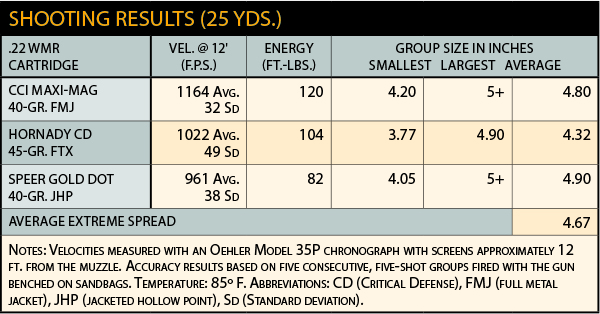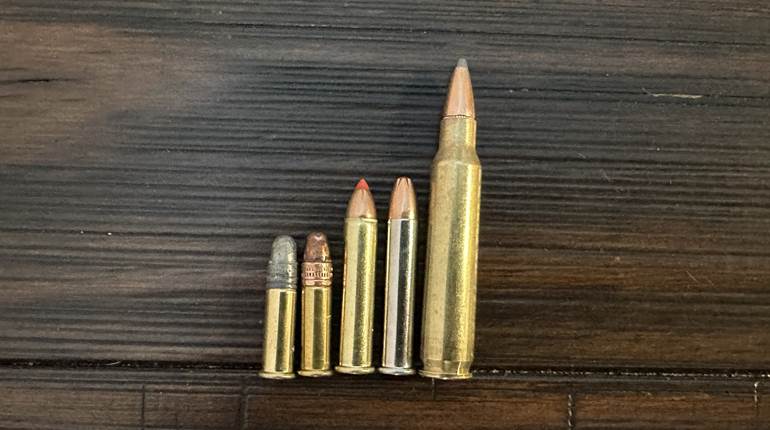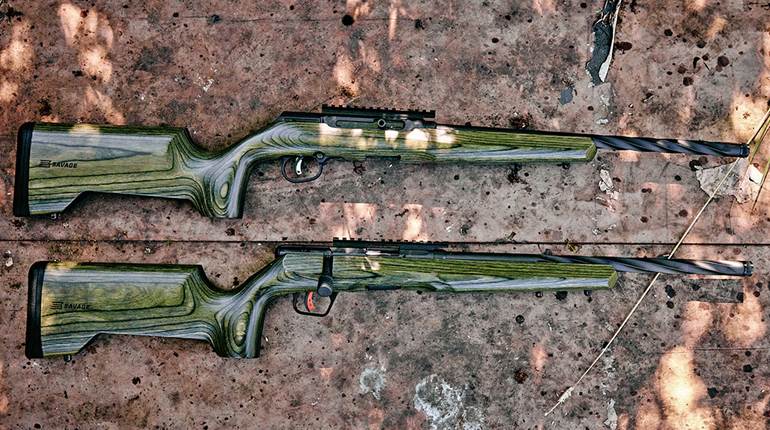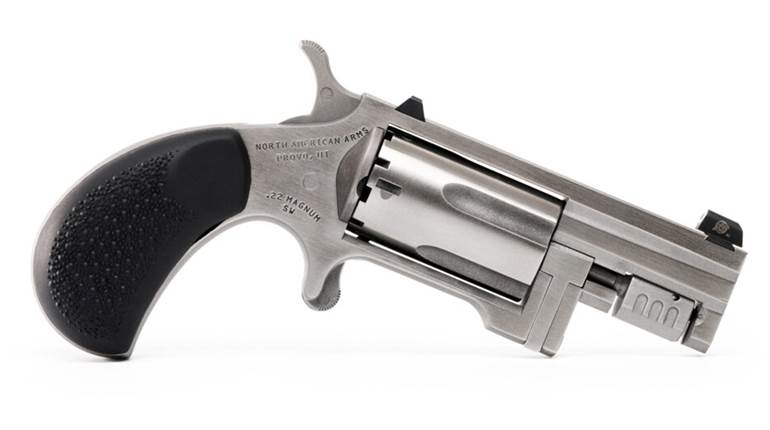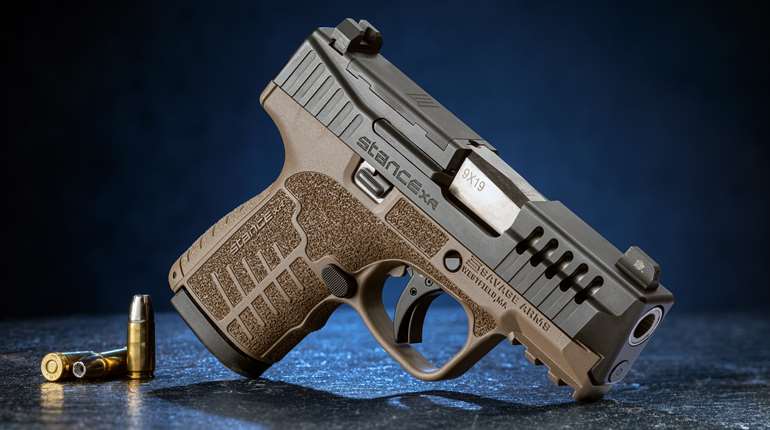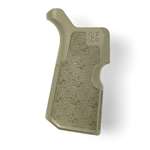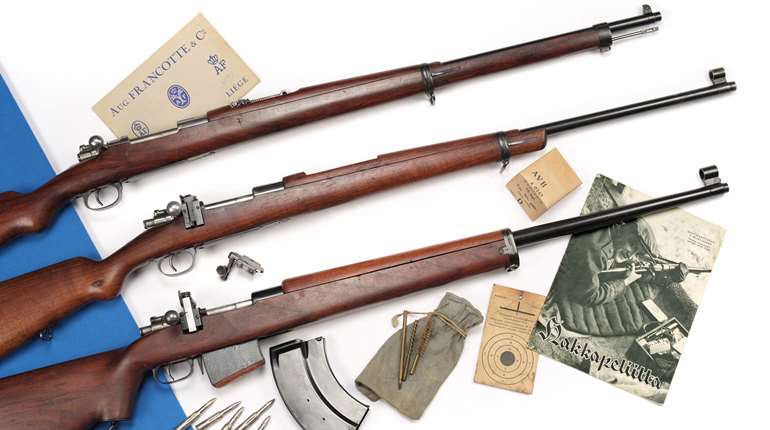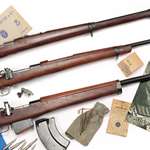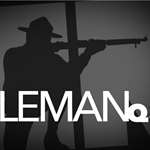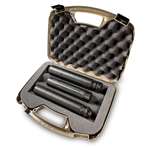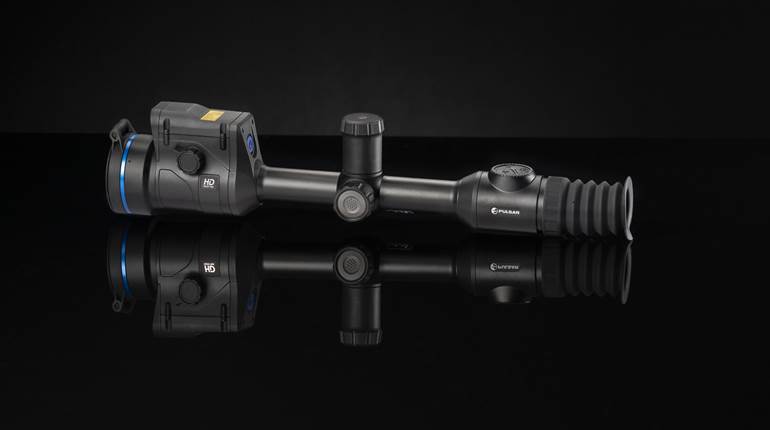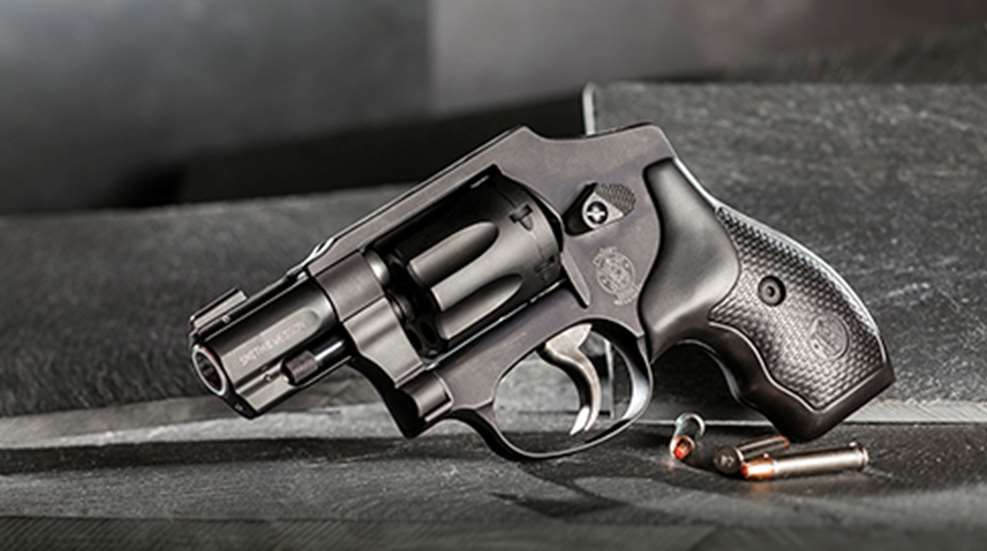
The revolver-making firm of Smith & Wesson has offered so-called “hammerless” revolvers since the late 1880s. Production was not continuous in that the original hinged-frame versions were discontinued from the line just before World War II. A solid-frame gun, chambered for modern cartridges and updated in other particulars, was introduced in the early 1950s and dropped in the late ’60s. Consumer demand brought the gun back in the ’80s and remains strong to the present day. A particular model of this style of revolver is the focus of this review.
S&W’s Model 351c is the latest variation of the Centennial design. That was the name given the new solid-frame .38 Spl. hammerless on the 100th anniversary of the first partnership of Horace Smith and D.B. Wesson in 1952. Made in the familiar style with a squarish frame and short 17⁄8-inch barrel, the 351c does have a hammer, but it is completely enclosed within the frame. Lockwork is double-action-only. Through the years, different Centennial variations have used .38 Spl., .357 Mag. and 9 mm Luger ammunition, as well as a few in .356 TSW from the Performance Center. The latest is the Model 351c, a .22 WMR.
The company received a number of customer requests for this chambering, as well as for the .22 Long Rifle. Both are now in production, but the .22 WMR is the focus here. This handy little cartridge has been made since the immediate post-World War II period and is usually found in a variety of sporting rifles. In this role, it increases the effective range of typical rimfire cartridges.
The .22 WMR has been used in several sportsman’s revolvers and even a two-shot derringer. For the most part, it has been a rifle cartridge, and almost all ammunition loaded for it reflects that status. The ammunition uses relatively slow-burning propellants, which are not efficient in the short tubes. With the advent of several short-barreled revolvers in .22 WMR, the ammunition makers have started offering short-barrel loads. Two of those loads-Hornady and Speer-were used in the evaluation of the gun.
The gun will be familiar to modern handgunners. Intended for concealed carry in pocket or purse, the 351c weighs just 11 ounces and measures 6.25 inches in overall length by 3.75 inches high. That’s hardly an onerous burden to habitually carry. It’s finished in a dull black and wears rubber stocks with molded S&W logo. The sights are particularly well-suited for the close-range defensive role-a U-notch rear and XS Big Dot front. Except for the barrel liner and fire-control parts, the 351c is mostly aluminum. That includes the frame, barrel shroud and cylinder. The cylinder holds seven rounds. Everywhere on the little revolver, there is an obvious effort to keep the gun light and easy-to-use, even under stress. That includes lightening cuts along the backstrap and under the trigger guard. Markings include a S&W logo on the left side and “AirLite” on the right sideplate. Everything about the 351c is a muted dull black as befits a hideout defense gun.
Even though .22 WMR ammunition does not feature heavy bullets or high velocities, recoil 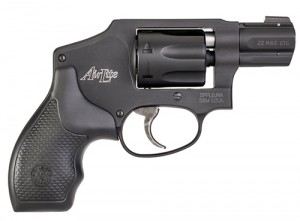 in the 11-ounce gun is snappy. Muzzle blast is also pronounced. It is by no means uncontrollable, but it is unpleasant. The trigger action is a far cry from S&W’s Masterpiece series. The main difference is the weight, which is something in excess of 15 pounds. In the course of developing the Airlite series, engineers found that the gun was so light that the falling hammer tended to nudge the mass of the gun away from the chambered round just enough to produce an occasional misfire. Making the gun heavier might have cured it, but was obviously out of the question. The solution was to use an extra-power main spring, which, although resulting in a heavy trigger, erased the misfire problem. It may not be the ideal trigger system, but no 351c-equipped handgunner under close attack is likely to have a problem getting his rounds fired.
in the 11-ounce gun is snappy. Muzzle blast is also pronounced. It is by no means uncontrollable, but it is unpleasant. The trigger action is a far cry from S&W’s Masterpiece series. The main difference is the weight, which is something in excess of 15 pounds. In the course of developing the Airlite series, engineers found that the gun was so light that the falling hammer tended to nudge the mass of the gun away from the chambered round just enough to produce an occasional misfire. Making the gun heavier might have cured it, but was obviously out of the question. The solution was to use an extra-power main spring, which, although resulting in a heavy trigger, erased the misfire problem. It may not be the ideal trigger system, but no 351c-equipped handgunner under close attack is likely to have a problem getting his rounds fired.
In similar fashion, the accuracy results reported herewith are not what we have come to expect from S&W. They were obtained by firing the gun from a bench rest with sand bags for extra support. The light gun and heavy trigger make accurate shooting difficult. It is interesting to note that the often-heard theme of “a .22 Mag produces .380 Auto ballistics” doesn’t quite hold up. A 95-grain .380 bullet averages 190 feet-pounds of energy and .22 WMRs from that short barrel run a bit more than 100 feet-pounds. Shooters would be well advised to consider a heavier caliber for personal defense. The little 351c is a great choice for pest control, impromptu hunting and informal field shooting. It also exhibits the quality that we have come to expect from S&W, and thus would be a good choice for such purposes.
Manufacturer: Smith & Wesson, 2100 Roosevelt Ave. Springfield, MA 01104; (800) 331-0852
Caliber: .22 WMR
Action Type: rimfire revolver
Frame: aluminum
Barrel: composite with a steel barrel liner
Rifling: six-groove, 1:18¾" RH twist
Cylinder Capacity: seven rounds
Sights: U-notch rear, XS Big Dot front
Trigger: double-action only; 15-lb. pull
Overall Length: 6.25"
Width: 1.31"
Height: 3.75"
Weight: 11 ozs.
Accessories: lockable case, owner’s manual, lock
Suggested Retail Price: $689
